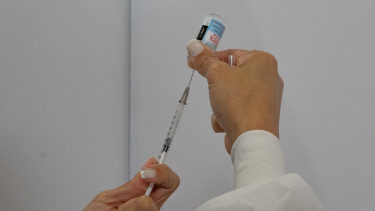Cornavirus data in Hungary - Cannot make heads or tails of them

Over the past few days the epidemic curve raised our hope that the pandemic has finally started to taper off in Hungary, although this attitude has already required a certain amount of optimism given the existence of contradictory figures.
A turnaround has occurred with no apparent reason and too soon after the restrictive measures were implemented. The changes in the number of new daily tests performed have been extremely volatile. The positivity rates are also erratic. There's basically no consistency between the data gauging the different stages of the disease (new cases, active cases, serious illnesses (hospitalisation, patients on ventilators), deaths).
Coronavirus data published on Thursday morning have not made the already murky picture clearer by one bit. At first glimpse, the figures suggest that instead of retreating the virus started to spread more rapidly. And upon examining the official data further we find that not only new cases but questions have also become more numerous. At 6,360 the number of new cases is the second-highest on record, and it was a large enough number to knock even the seven-day moving average off its descending course.

So, you say that they diagnosed so many people with coronavirus infection possibly because they performed a record number of tests? Let's say you're right. Then the copious amount of tests must have resulted in a percent positivity rate that fits into a descending trend. Well, think again. 18,500 tests were performed that fits into the trend but the positivity rate came in extremely high at almost 35%.
Some experts also claim that the results authorities report for the day before are actually of samples taken 10 or 14 days earlier.
The basic figures for yesterday (or for 10-14 days ago, who knows?) suggest that coronavirus is spreading (or was spreading) rapidly again, breaking the descending trend of the preceding days. This is hard to believe in view of the restrictive measures in place for over two weeks now.
We might attribute the higher number of new cases to greater testing efforts, but the daily test numbers do not show an increased capacity or a descending positivity rate. Note that if tests are performed not only among those that show symptoms, but asymptomatic people as well (e.g. teachers), the rate of tests that come back positive should drop considerably.
The official government website, koronavírus.gov.hu, said the following today: "The total number of confirmed COVID-19 cases includes those that tested positive by rapid [antigen] tests by paramedics, on special testing buses and among hospital staff. The combined results of targeted group testing of nursery, kindergarten, school staff and social workers can be expected early next week."
It's really hard to decipher. Are the results of the tests of school teachers etc. not included then? Or they are but will be added up later as well?

Most people only want to know if the spread of coronavirus is accelerating or decelerating. Most countries churn out data series, charts, interactive maps about the spread of the virus. Meanwhile, Hungarian authorities give people an ever more complex, contradictory, confusing word problem with erroneous or incomplete data. The teacher, in this case the Chief Medical Officer, stands in front of the class (that would be us) every day and drops a few more bits of information here and there while trying to show the 'students' how to solve this puzzle.
The students, i.e. analysts, journalists, epidemiologists, mathematicians, economists, etc., are working extra hard to solve the problem, and see whether the pandemic is retreating or getting worse while they have to rely on incomplete daily reports put together on the basis of an unknown methodology.
We're getting or possibly even past a point where they have no choice but to admit that the lack of data, their immense unreliability and the mysterious methodology make it impossible to solve this problem.
It deserves no explanation why anyone is prone to make huge mistakes in a situation like this. If the epidemic has indeed subsided and we follow the logic of Hungary's epidemiological policy, then it might be time to consider loosening certain restrictive measures. On the other hand, if we take a look at the number of COVID-19 patients in hospital and on ventilators, the cabinet should start mapping out the next tightening measures.
If tightening happens to be too drastic, the economy will be strangled even harder. If they loosen restrictions prematurely, the health care system which is already on under extreme pressure and grasping for air will edge even closer to collapse. Groping in the dark has only one advantage and a dubious one at that: at least others will not know it either if we make the wrong call.
Cover photo: Getty Images








